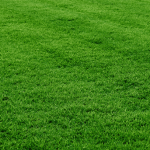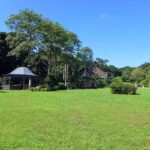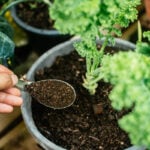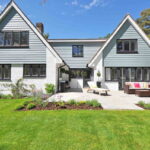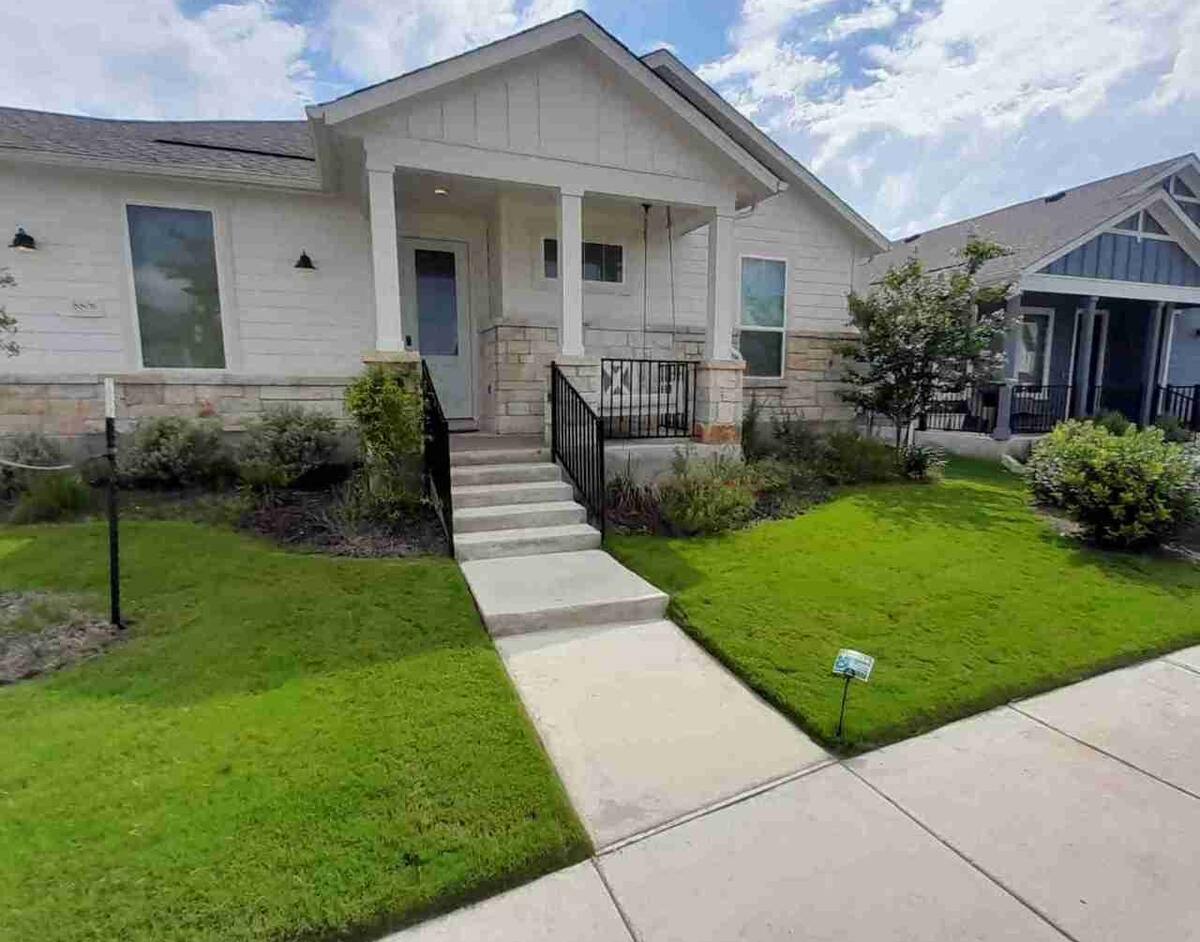
The best grass types for Austin are drought-tolerant and low maintenance, because our summers can be brutal to lawns. That puts St. Augustinegrass and Bermudagrass at the top of the list. Zoysia, another warm-season grass, also is popular.
For a cool-season grass for overseeding, ryegrass is a favorite choice.
What’s the best grass type for YOUR Austin lawn? That depends on whether your grass gets lots of sun, foot traffic, and how much time you have or want to spend keeping your lawn green and healthy.
Take the quiz below to see which grass type our lawn care research recommends for your lawn, then read more about each of the 4 best grass types for Austin.
Austin Lawn Grass Decision Calculator
Find the perfect grass for your Austin lawn based on your specific needs. Our calculator considers key factors like shade tolerance, drought resistance, foot traffic, maintenance requirements, and disease risk.
St. Augustinegrass
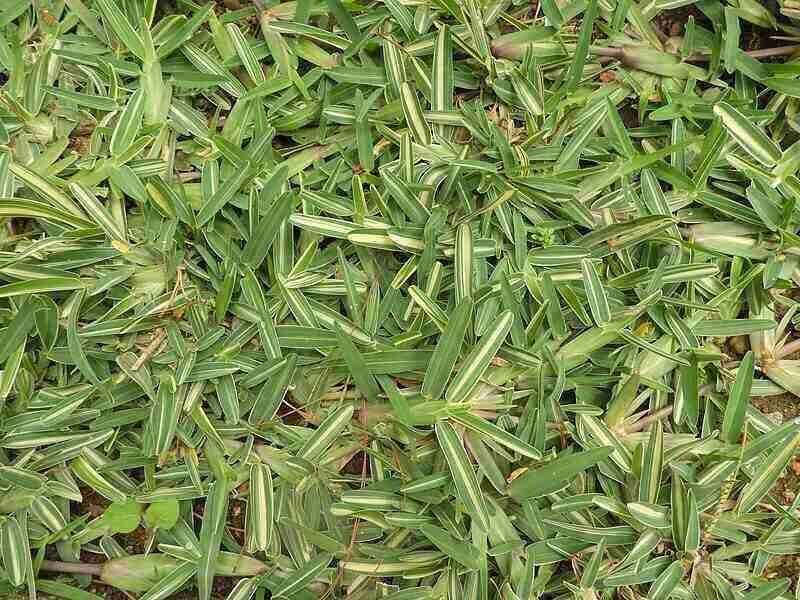
Photo Credit: Yercaud-elango / Wikimedia Commons / CC BY-SA 4.0
St. Augustine is fast growing and is known for its thick carpeted appearance. St. Augustinegrass does well in the shade and it’s heat-tolerant, so it can handle our sweltering Austin summers. It does, however, require a lot of maintenance and irrigation in the heat, so this grass could raise your water bill in our hottest months.
Austin Pro Tip (from Isabel López of AR Lawn Care): Two tips to care for St. Augustine during the whole year would be use appropriate fertilizer and watering.
Note: If you don’t mow frequently (every week or so), you’ll risk thatch buildup. Also, St. Augustine is subject to fungal and pest problems.
The best time to plant St. Augustinegrass is in late spring or early summer. You’ll need plugs or sod, as seed is not commercially available.
- Foot Traffic Tolerance: Low to moderate
- Mowing Height: 2.5 to 4 inches
- Potential for Disease: Moderate to high; susceptible to fungal disease
See Related:
— How to Care for St. Augustinegrass
— Best Fertilizers for St. Augustinegrass
— How to Lay Sod (Step-by-Step Guide)
Bermudagrass
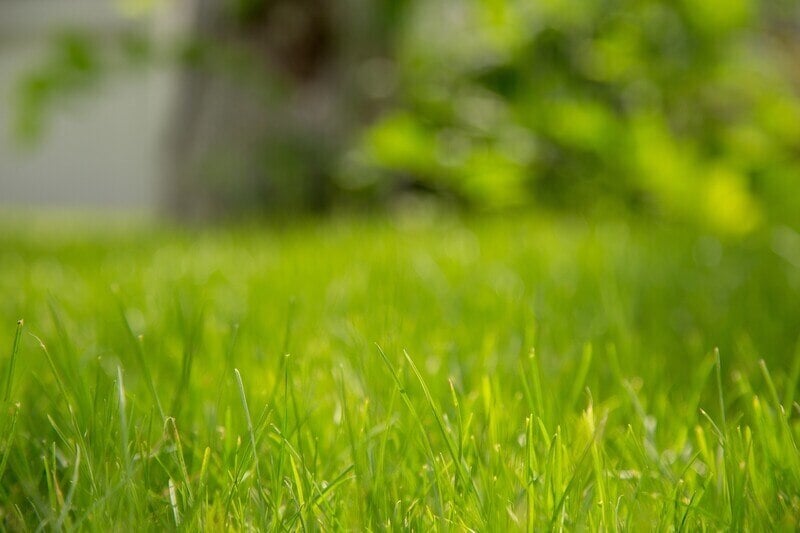
Photo Credit: rovenimages.com / Pexels
Bermudagrass is well-suited for our warm climate in Central Texas, though it does need to be irrigated frequently. Benefits of Bermudagrass include its disease resistance.
Austin Lawn Care Pro Tip (from Josiah Cantu of JC Landscaping): Keep Bermudagrass short during the warm seasons (2 inches preferably), watering 1-2 times per week during dry spells (preferably mornings) and 3-4 times during cold seasons.
Round Rock Lawn Care Pro Tip (from Trae Tindall of Hayven’s Garden Lawn Care): Always fertilize and water your Bermudagrass yard when it’s the appropriate time.
Got shade? Bermudagrass is not the grass for your lawn. This grass must have full sun. Like all warm-season grasses, the best time to plant Bermudagrass is in the spring or early summer.
- Foot Traffic Tolerance: High
- Mowing Height: 1-2 inches
- Potential for Disease: Low
Bermudagrass is a stunning grass plant, both improved Bermudagrass (darker green, deeper-rooted, medium-fine textured, and moderately more dense) and common Bermudagrass varieties.
Note: If you go with improved Bermudagrass, be prepared for a rigorous maintenance schedule. You’ll likely be fertilizing about once a month during the summer, mowing more than once per week on average, and irrigating pretty frequently.
See Related:
— Bermudagrass Guide: Types, Traits, and Care
— When to Fertilize Bermudagrass Lawns
— Best Fertilizers for Bermudagrass
— How to Keep Bermudagrass out of Flower Beds
Zoysiagrass
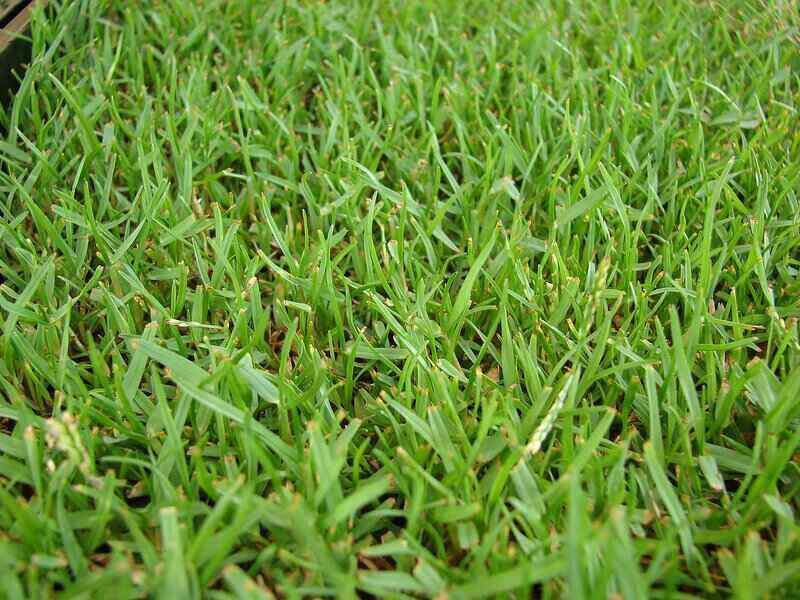
Photo Credit: Forest and Kim Starr / Wikimedia Commons / CC BY 3.0 US
Zoysiagrass is absolutely beautiful, growing into a lush, dense lawn with great foot traffic and drought tolerance. It also grows more slowly than St Augustine, which means you’ll have to mow your lawn less often.
However, Zoysiagrass takes a long time to establish (one to three seasons) and is slow to recover from damage. On the bright side, it doesn’t require as much fertilization as St. Augustinegrass.
Zoysia has low to moderate shade tolerance, and coarser-textured species are more drought-tolerant than fine-textured varieties.
Note: If you have a Zoysia lawn, it’s recommended that you consult an Austin lawn care professional. Zoysia is a tough grass type to maintain, but if done well, Zoysiagrass is magnificent.
- Foot Traffic Tolerance: High; slow to recover
- Mowing Height: 1-2 inches
- Potential for Disease: Low
Ryegrass
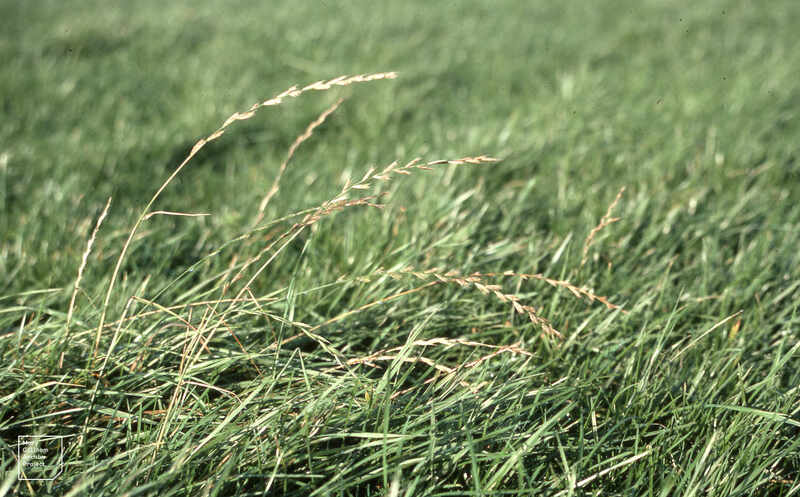
Photo Credit: Dr Mary Gillham Archive Project / Flickr / CC BY 2.0
Ryegrass is a cool-season grass that is primarily used as a temporary “green-up” lawn for overseeding (or re-seeding) Austin lawns during the fall or winter. When you overseed with ryegrass, your lawn can remain vibrant and green through fall and winter. It can also be used as a temporary erosion control tool.
There are two types of ryegrass — annual and perennial. But don’t expect either to stick around. Except in the northern part of the state, ryegrass won’t hold up year-round in the Texas heat.
- Foot Traffic Tolerance: High
- Mowing Height: Mowing heights will depend on the warm-season grass you’re overseeding
- Potential for Disease: Moderate
See Related:
— How to Overseed Your Lawn (in 8 Easy Steps)
— Best Grass Seed for North Texas
Note: While buffalograss is a Texas native grass commonly known for its drought-resistance, for Austin lawns, it is less suitable than the others on this list. With rainfall in Austin averaging 35.5 inches per year, the climate in East Texas is not suited for this particular grass.
Best Grass Types for Austin Compared
Among the factors to consider when choosing a grass type for your Austin lawn are lawn maintenance (how much work will it take to keep your yard looking great), drought tolerance, and shade tolerance.
The table below compares the four best grass types for Austin on these 3 factors and more, but we’ve made it even easier for you to make a choice. Take the quiz at the top of this article. Make your selections based on your Austin yard.
| St. Augustine | |
| Pros: — Fast growing, thick carpet of grass — Shade tolerant — Drought tolerant — Salt tolerant (good choice for coastal areas) — No need to overseed St. Augustinegrass | Cons: — Requires lots of irrigation in summer — Requires frequent mowing (once a week) — Foot traffic (low to moderate) — Susceptible to fungal lawn diseases — Problem pests: Chinch bugs, mole crickets, white grubs |
| Bermuda | |
| Pros: — High-quality turf (improved common Bermudagrass feels soft underfoot) — Drought-tolerant — Salt tolerant (good choice for coastal areas) — Thrives in full sun — Water needs: Low to moderate | Cons: — Low cold tolerance (goes dormant in winter) — Fast growth rate means frequent mowing — Low shade tolerance — Can spread aggressively to flower beds or other lawns — Tends to develop thatch |
| Zoysia | |
| Pros: — Great “barefoot grass” to walk on — Crowds out most weeds — Tolerates foot traffic (often used on golf course fairways) — Cold tolerant — Resists common lawn diseases | Cons: — Grows slowly — Slow to establish from seed or plugs (experts recommend sod to establish a Zoysia lawn) — Turns brown during a drought — Plan for 3 fertilizer applications per year |
| Ryegrass | |
| Pros: — Soft-to-the-touch blades — Medium to dark green color — Germinates fast — Excellent foot traffic tolerance — Not prone to thatch buildup | Cons: — Not cold tolerant (doesn’t like temperatures below 30 degrees for long periods) — Slow to recover from damage — Low heat and drought tolerance |
Make Lawn Care Easy: Hire an Austin Lawn Care Pro
When picking a grass type in Austin, it all depends on what you’re looking for — aesthetically, maintenance-wise, and practically. If you’re looking for a fast track to a beautiful lawn, one of LawnStarter’s Austin lawn care pros will take lawn care off your to-do list.
We also have local lawn care pros in Round Rock, Pflugerville, Cedar Park, and Manor — and all across the Austin metro area. Call, click, or book mowing in our app.
Lawn mowing, trimming around your flower beds and trees, and blowing debris off your driveway, sidewalk, and patio — our pros do that on every visit.
Note: The writer, Jeff Herman, lived in Austin for nearly 4 years.
Main Photo Credit: A LawnStarter pro in Austin, Texas, showcasing a job well done
